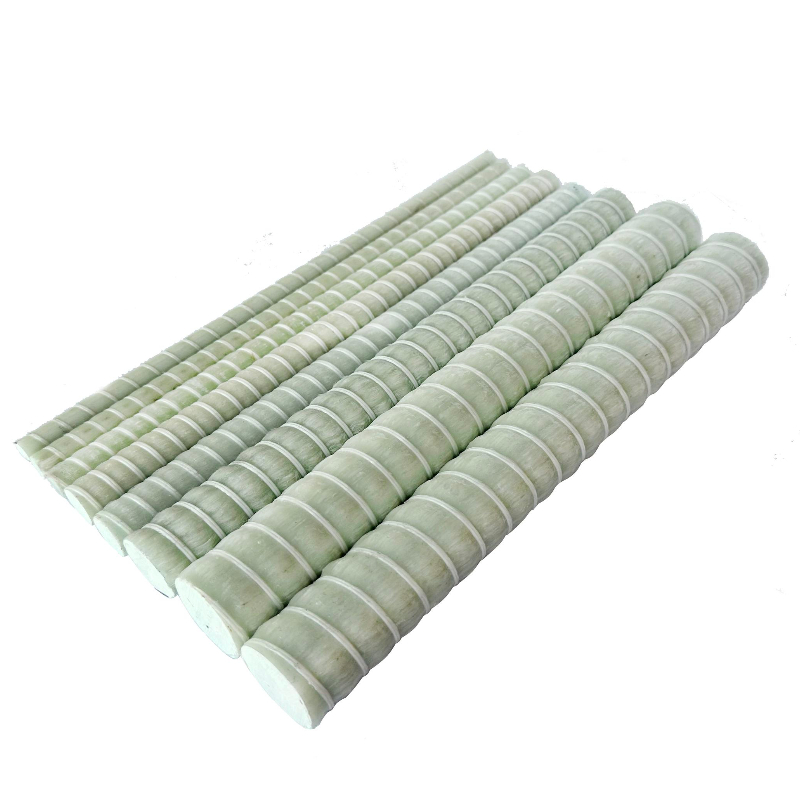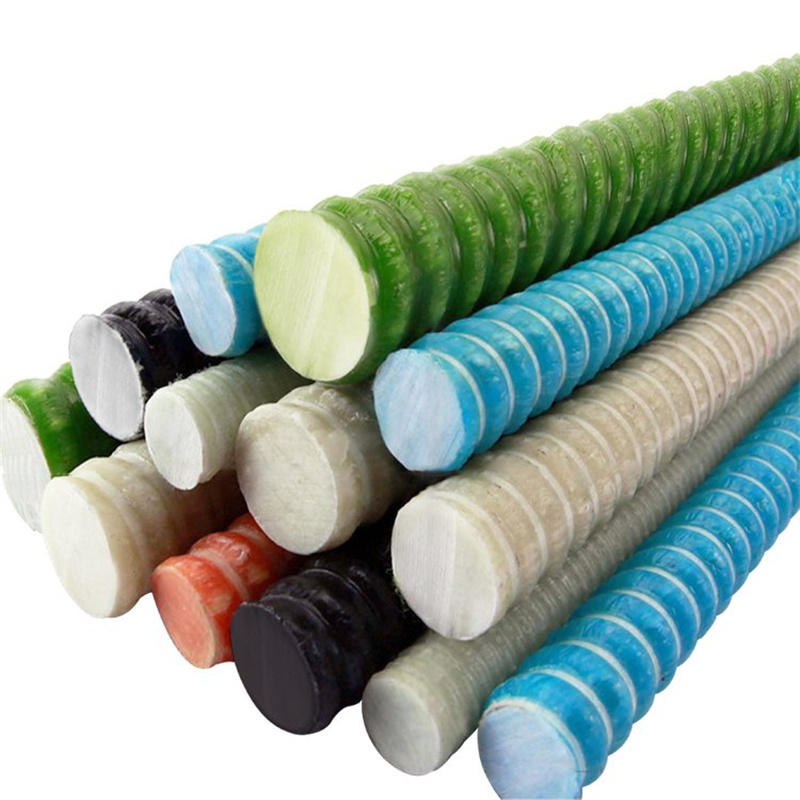Introduction
Fiberglass rebar has emerged as a revolutionary material in the construction industry, offering a host of advantages over traditional steel reinforcement. Its unique properties have opened up new possibilities for engineers and builders, enabling the development of structures that are stronger, more durable, and more cost-effective. This article provides a comprehensive analysis of where fiberglass rebar can be used, delving into its applications across various sectors and exploring the underlying reasons for its growing popularity.
One of the key aspects of fiberglass rebar is its corrosion resistance, which makes it particularly suitable for environments that are challenging for conventional materials. By examining the properties and benefits of Fiberglass Rebar, we can understand how it contributes to the longevity and reliability of modern infrastructure.
Properties of Fiberglass Rebar
Fiberglass rebar is made from glass fiber reinforced polymer (GFRP), which combines high-strength glass fibers with a resin matrix. This composition results in a material that is not only strong but also lightweight and resistant to a range of environmental factors. The non-corrosive nature of fiberglass rebar eliminates one of the primary causes of deterioration in steel-reinforced structures.
Additionally, fiberglass rebar is non-conductive and non-magnetic, properties that are essential in certain specialized applications. Its thermal expansion characteristics are similar to concrete, reducing the risk of internal stresses caused by temperature fluctuations. These properties contribute to the overall performance and sustainability of structures that utilize fiberglass rebar.
Mechanical Strength and Durability
The mechanical strength of fiberglass rebar is comparable to that of traditional steel rebar, with a tensile strength that can exceed steel's. This high tensile strength ensures that structures reinforced with fiberglass rebar can withstand significant loads and stresses. Moreover, the material's durability in harsh environments extends the service life of structures, reducing maintenance costs and improving safety.
Lightweight Nature
Weighing approximately one-quarter the weight of steel rebar, fiberglass rebar simplifies handling and installation. This lightweight nature reduces labor costs and accelerates construction timelines. It also lessens the physical strain on workers, contributing to a safer work environment. The ease of transport and manipulation of fiberglass rebar is a significant advantage in large-scale projects.
Applications in Civil Engineering
In civil engineering, the use of fiberglass rebar has become increasingly prevalent. Its resistance to corrosion and environmental degradation makes it ideal for infrastructure projects exposed to harsh conditions. The following sections explore specific civil engineering applications where fiberglass rebar provides substantial benefits.
Bridges and Highways
Bridges and highways are constantly exposed to environmental stressors such as moisture, salt from de-icing agents, and temperature variations. Traditional steel reinforcement in these structures is susceptible to corrosion, leading to structural weaknesses over time. Fiberglass rebar's corrosion resistance significantly enhances the lifespan of bridges and highways, reducing the need for frequent repairs and replacements.
Moreover, the lightweight nature of fiberglass rebar reduces the overall weight of the structure, which can be particularly beneficial in bridge design. The material's flexibility allows for innovative architectural designs without compromising strength and durability.
Marine Structures
Marine environments are among the most challenging for construction materials due to the constant presence of saltwater and the associated corrosive effects. Fiberglass rebar is an excellent choice for marine structures such as docks, piers, seawalls, and offshore platforms. Its resistance to saltwater corrosion ensures structural integrity over extended periods.
The use of fiberglass rebar in marine applications also reduces environmental impact by minimizing the leaching of rust and other contaminants into the water. This aligns with environmental regulations and promotes sustainable development in sensitive ecosystems.
Applications in Buildings and Infrastructure
Beyond civil engineering, fiberglass rebar finds applications in various building and infrastructure projects. Its unique properties address specific challenges in constructing safe and efficient buildings.
Electrical and Magnetic Neutrality
Fiberglass rebar is non-conductive and does not interfere with electromagnetic fields. This makes it the preferred reinforcement material in structures housing sensitive electronic equipment. Facilities such as MRI rooms in hospitals, research laboratories, and electrical substations benefit from the use of fiberglass rebar to prevent electromagnetic interference.
The absence of magnetic properties ensures that equipment functions correctly, providing accurate readings and maintaining operational safety. By using Fiberglass Rebar, engineers can design buildings that meet stringent electromagnetic compatibility requirements.
Chemical Plants and Industrial Facilities
Industrial environments often involve exposure to chemicals that can corrode steel reinforcement. Fiberglass rebar's resistance to a wide range of chemicals makes it suitable for use in chemical plants, wastewater treatment facilities, and industrial flooring. It ensures that the structural integrity of these facilities is maintained, even under constant exposure to harmful substances.
Implementing fiberglass rebar in such settings reduces maintenance costs and downtime associated with repairing corroded structures. It contributes to the safety of operations by minimizing the risk of structural failures.
Applications in Transportation Infrastructure
Transportation infrastructure demands materials that can withstand heavy use and environmental challenges. Fiberglass rebar offers solutions to several issues faced in this sector.
Railway Systems
Railway tracks and related structures benefit from the use of fiberglass rebar due to its non-conductive properties. It prevents interference with signaling systems and reduces the risk of stray currents that can cause corrosion in metallic components. The durability of fiberglass rebar also ensures that railway infrastructure remains reliable under the constant stress of heavy loads.
By incorporating fiberglass rebar into railway projects, engineers improve safety and reduce long-term maintenance needs. This contributes to more efficient and dependable transportation networks.
Airport Runways and Aprons
Airport infrastructure requires materials that can handle heavy aircraft loads and resist degradation from fuel spills and de-icing chemicals. Fiberglass rebar provides the necessary strength and chemical resistance for runways, taxiways, and aprons. Its use extends the lifespan of airport pavements and enhances safety by maintaining structural integrity.
The lightweight nature of fiberglass rebar also simplifies the construction process, allowing for faster project completion and reduced disruption to airport operations.
Environmental and Sustainability Considerations
Sustainability is a growing priority in construction, and fiberglass rebar contributes positively in this regard. Its production and use have environmental benefits that align with green building practices.
Reduced Carbon Footprint
The manufacturing process of fiberglass rebar generally results in lower carbon emissions compared to steel production. Additionally, the material's longevity reduces the need for replacements and repairs, leading to less resource consumption over time.
By opting for fiberglass rebar, builders can contribute to reducing the overall environmental impact of construction projects. This supports global efforts to mitigate climate change and promotes sustainable development.
Recyclability and End-of-Life Management
While fiberglass rebar is durable, considerations for its end-of-life management are essential. Advances in recycling technologies are enabling the repurposing of fiberglass materials, reducing waste, and contributing to a circular economy. Ongoing research is enhancing the recyclability of fiberglass rebar, making it an even more sustainable choice for the future.
Challenges and Considerations
Despite its many advantages, the use of fiberglass rebar comes with certain challenges that must be addressed to fully capitalize on its benefits.
Cost Implications
Initially, fiberglass rebar may have a higher material cost compared to steel rebar. However, when considering the entire lifecycle of a structure, including maintenance and replacement costs, fiberglass rebar often proves to be more cost-effective. It's crucial for project planners to evaluate long-term benefits versus upfront expenses.
Financial analysis models that incorporate life-cycle costing can help in justifying the investment in fiberglass rebar. This approach ensures that decision-making reflects the true value offered by the material.
Design and Engineering Standards
Because fiberglass rebar behaves differently than steel, engineers must consider specific design codes and guidelines when incorporating it into structures. Standardization of design practices is still developing, which can pose challenges in adoption. Collaboration with manufacturers like SenDe, who provide technical support and customized solutions, can mitigate these challenges.
Investing in training and education for engineers and construction professionals is essential to ensure proper implementation and maximize the benefits of fiberglass rebar.
Conclusion
Fiberglass rebar represents a significant advancement in construction materials, offering solutions to many of the limitations associated with traditional steel reinforcement. Its applications span various sectors, including civil engineering, building construction, transportation infrastructure, and more. The material's unique properties, such as corrosion resistance, lightweight nature, and non-conductivity, open up new possibilities for durable and efficient structural designs.
By understanding where fiberglass rebar can be used and the benefits it provides, engineers and builders can make informed decisions that enhance the quality and sustainability of their projects. Companies like SenDe offer high-quality Fiberglass Rebar solutions that meet international standards and support the most demanding construction applications.
Frequently Asked Questions
1. What are the main advantages of using fiberglass rebar over steel rebar?
Fiberglass rebar offers several advantages, including corrosion resistance, lightweight nature, high tensile strength, and non-conductivity. These properties lead to longer-lasting structures, reduced maintenance costs, easier handling during construction, and suitability for specialized applications where electromagnetic neutrality is required.
2. In which environments is fiberglass rebar particularly beneficial?
Fiberglass rebar is especially beneficial in environments that are prone to corrosion, such as marine settings, areas exposed to de-icing salts, chemical plants, and wastewater treatment facilities. Its resistance to moisture, chemicals, and extreme temperatures makes it ideal for these challenging conditions.
3. How does the use of fiberglass rebar impact the overall cost of a construction project?
While the initial material cost of fiberglass rebar may be higher than steel, the overall cost can be lower when considering reduced labor costs due to its lightweight nature, lower maintenance expenses, and extended lifespan of the structure. The long-term economic benefits often offset the higher upfront investment.
4. Can fiberglass rebar be used in standard construction practices?
Yes, but it requires adherence to specific design codes and guidelines tailored to its material properties. Engineers need to account for factors like bond strength with concrete and different stress-strain behavior. Working with manufacturers that provide technical support ensures proper implementation in standard construction practices.
5. Is fiberglass rebar suitable for use in seismic zones?
Fiberglass rebar can be used in seismic zones, but careful design considerations are necessary due to its linear elastic behavior up to failure. Engineers must ensure that structures meet the required ductility and energy absorption characteristics for seismic performance, potentially combining fiberglass rebar with other reinforcement methods.
6. How does fiberglass rebar contribute to sustainability in construction?
Fiberglass rebar contributes to sustainability by reducing the carbon footprint associated with material production and decreasing the frequency of repairs and replacements. Its durability leads to longer-lasting structures, conserving resources over time. The potential for recyclability also adds to its environmental benefits.
7. What customization options are available with SenDe's fiberglass rebar?
SenDe offers fiberglass rebar in various diameters and lengths, customizable to meet specific project requirements. This flexibility allows engineers to select the appropriate dimensions for their designs, ensuring optimal performance and efficiency. SenDe's products are rigorously tested to comply with international standards for safety and quality.




























